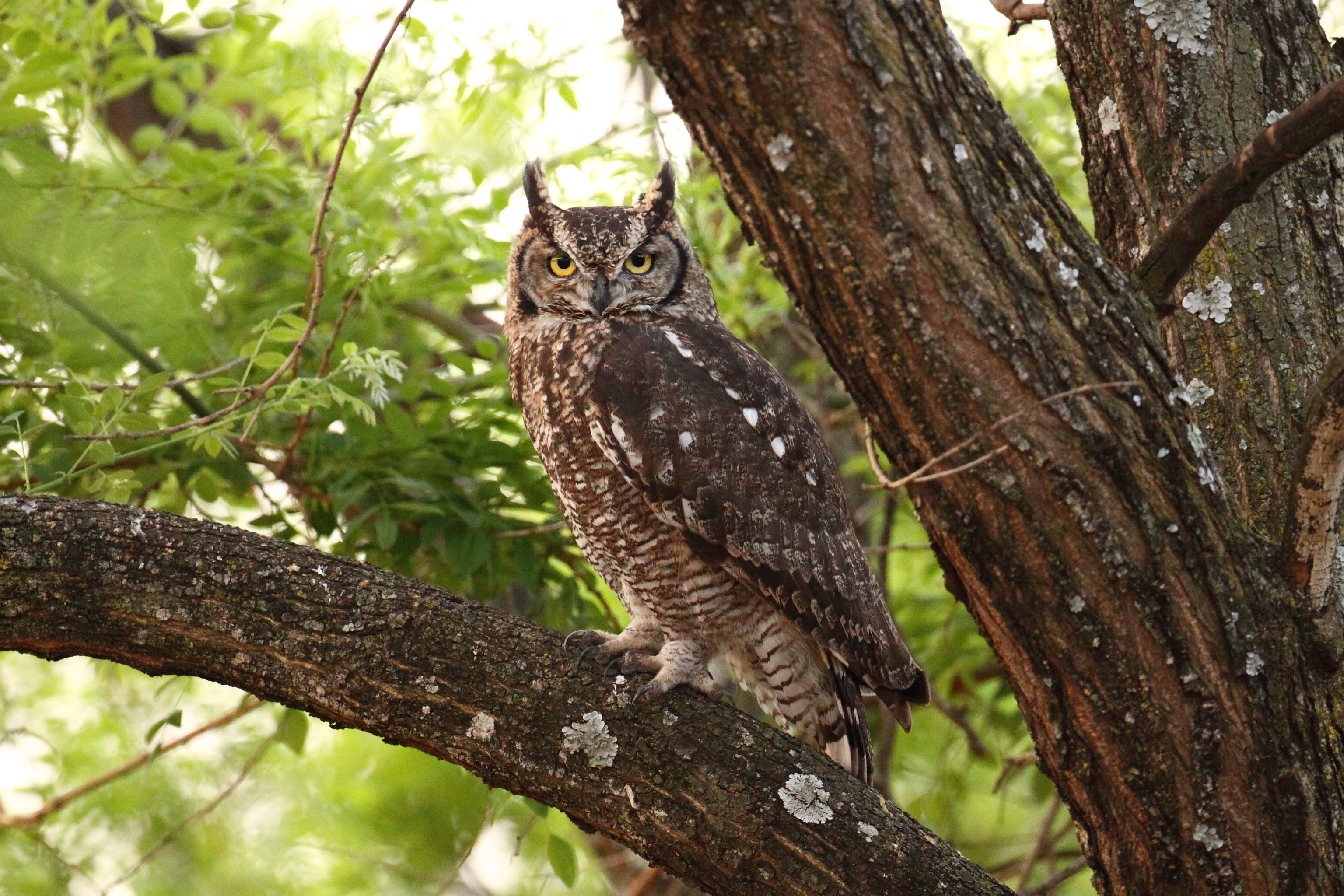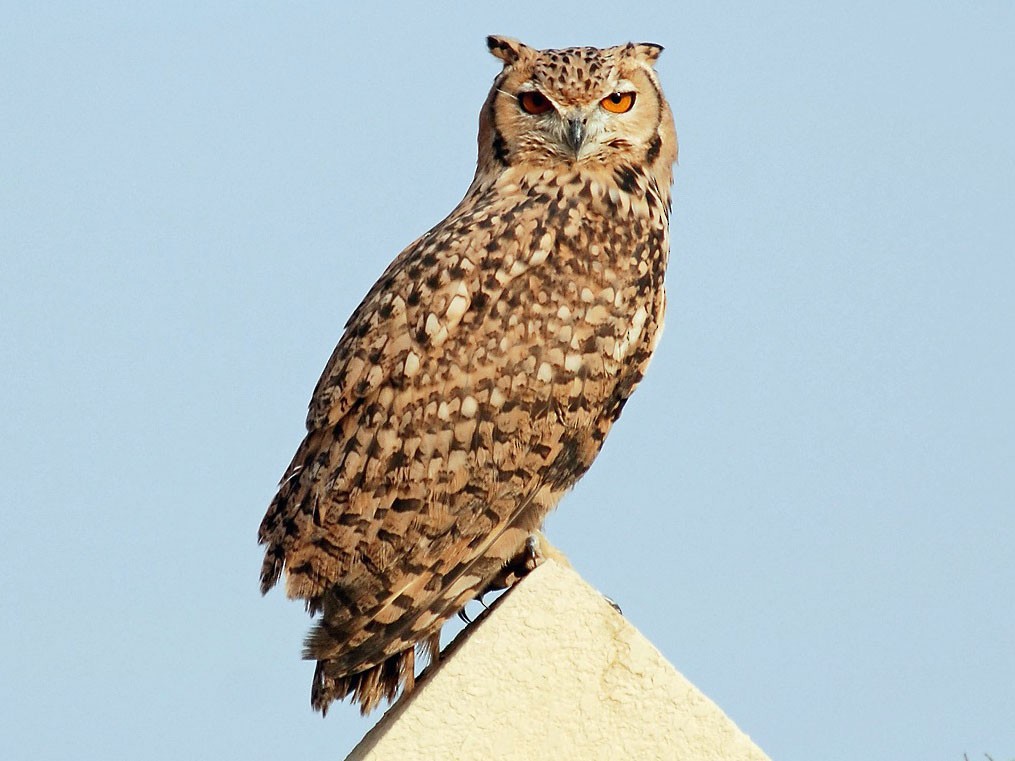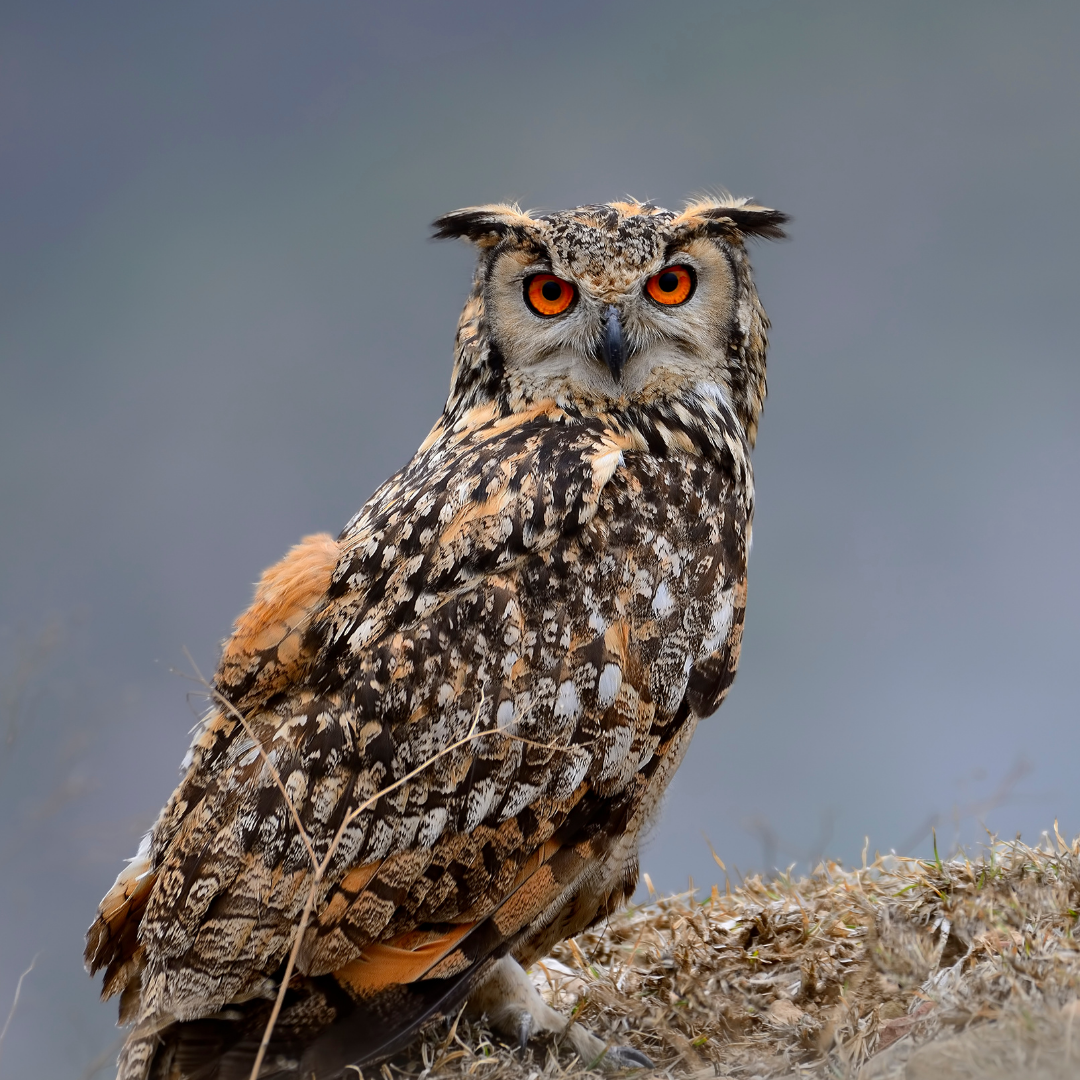I have been feeling neglectful of some of the more exotic owl species lately. All the GHO and Barred babies have been dominating my feeds recently, so I’ve been overflowing with that content.
This morning’s other post about the owl with 11 step kids was too good to pass up, but I was a little disappointed the photo wasn’t very high quality, so I’ll share some better pics with you now!
Here are a few owls photographed by Peet van Schalkwyc in South Africa.
This fluffy fellow is a Marsh Owl. It looks a bit like his cousin, the Short Eared Owl. I liked this picture because the little tufts are not usually in their upward position. Much like the Shorty, this owl nests in a grass lined divot on the ground.

This is the Pearl Spotted Owlet, a type of Pygmy Owl. Like many Pygmy Owls, this one has the characteristic eye spots on the back of the head.
There is also an African Barred Owlet, which is similar looking, but has striped on the head instead of spots.
Totes adorbs! Y’know, for a predator.
They mostly eat bugs instead of cute fluffy things if that is a plus!

I swear this isn’t just a Great Horned Owl!
Again, while (edit: the Spotted Eagle Owl is) in the same genus as one of the greatest American owls, this owl is its own species.
This is the most common owl in southern Africa, and it is the smallest of the Eagle Owls. They are commonly found near people, prefer to live in rocky areas, and have a distinct call from the American GHO.
How wild that these continents have such similar owls when so many other continents have owls that look like total aliens to me. Cause if you’d have told me that these were pics of a Burrowing Owl and a GHO, I’d 100% have believed you.
Whoops, I never said the one above is a Spotted Eagle Owl.
Here is a journey of Bubos from South Africa, through north Africa and the Middle East, to India, up through East Asia, over the Bering Land Bridge, and down to South America. I didn’t include all the Bubos, but this should be pretty good showing how they changed as they spread out over most of the world. The Fish Owls also probably split off of this group in East Asia. The Snowy and GHO split off somewhere while the land bridge existed.
Spotted Eagle Owl

Pharaoh Eagle Owl

Arabian Eagle Owl

Indian Eagle Owl

Eurasian Eagle Owl

Great Horned Owl

Magellanic (Lesser) Horned Owl

This is incredible for comparison!! Thank you!!!
I’m actually surprised that they look more similar than I expected. Especially the coloring on this Pharoah individual and this Eurasian individual. But that body shape is surprisingly preserved across a lot of different geographies.
When it works, it works, I guess.
I did a little cherry picking in images, but mainly just to find ones not overly edited.
I wonder which is thought to be the oldest. Middle to east Asia is where the Eurasian Eagle Owl and the Fish Owls were the least GHO looking, while the more away from East Asia we go in either direction looks more GHO. If they branched off to be the Fish Owls that are only in Asia and the Snowies in the Arctic, that would seem to be where the most diversity came from.
I’m no zoologist though, so don’t put much weight into this. 🙃
Interesting to see them all!
I’m glad you enjoyed it! This is a bit more direct comparison then I’ve done before as well.
At one point I was going to show off every owl, one by one, but since about 1/3 of all species would pass for your average Screech Owl, I passed on that project.
I mean… I wouldn’t mind seeing that. But it may lessen the impact of the owls. I appreciate your effort.
Oh, we’ll get there eventually! I just thought it would be tiring for all of us to have 100 days of Screech variations followed by 50 of Pygmies.
I’ve been meaning to make a checklist to track who I’ve missed so far though. I’m hoping I’m about a third through them all.
I’m glad you’re enjoying all the ones we’ve learned about so far! You guys keep me motivated.
Can you imagine if someone ran a community like this for every animal? It’s incredible learning about the diversity within owl species and it’d be cool to learn more about other creatures as well!!
I don’t know how the groups like Opossums and Bats and Raccoons do it, just have a few species. I don’t know how I’d get something new every day.
Owls are easy because I’ve got 250+ to pick from, even if a lot of them look similar. If I get tired of one, I’ve got options, but how many kinds of different looking possums exist? 3?
A general AnimalFacts could be fun though, and would be able to use cross posting effectively to borrow items from other groups.
Yes that’s a great idea!



